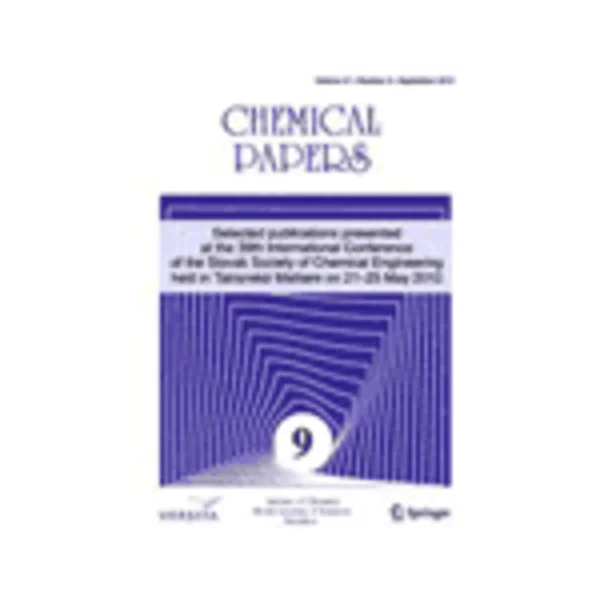-
assessment of the fate of some household micropollutants in urban wastewater treatment plant
جزئیات بیشتر مقاله- تاریخ ارائه: 1392/07/24
- تاریخ انتشار در تی پی بین: 1392/07/24
- تعداد بازدید: 828
- تعداد پرسش و پاسخ ها: 0
- شماره تماس دبیرخانه رویداد: -
everyday domestic activity is a significant source of water pollution. the presence of six household micropollutants in an urban wastewater treatment plant (wwtp) was assessed in wastewater and sludge. a multi-target analytical method was developed for the quantification of ibuprofen, erythromycin, ofloxacin, 4-nonylphenol, 5-chloro-2-(2,4-dichlorophenoxy)phenol (triclosan), and sucralose. the micropollutants were extracted from the liquid and solid phases and their concentrations were determined by lc-ms/ms. the efficiency of micropollutants’ removal within a conventional activated sludge process was assessed. from 50 % to 90 % of ibuprofen and erythromycin was removed from the wastewater liquid phase. their removal can be attributed to biological degradation as they were not found adsorbed on the outlet sludge. ofloxacin and triclosan were removed from the liquid phase with similar efficiencies; however, they were adsorbed on the sludge, so it was not possible to determine their removal mechanism (whether biodegradation or displacement to solid phase/sequestration). sucralose was not removed from wastewater (3 μg l−1in inlet and outlet liquid phase) and not adsorbed on the sludge. 4-nonylphenol concentrations were sometimes higher in the wwtp outlet water; this may relate to the degradation of alkylphenol ethoxylates in the wastewater treatment process. 4-nonylphenol was always present in the outlet sludge.
مقالات جدیدترین رویدادها
-
استفاده از تحلیل اهمیت-عملکرد در ارائه الگوی مدیریت خلاقیت سازمانی و ارائه راهکار جهت بهبود
-
بررسی تاثیر ارزش وجوه نقد مازاد بر ساختار سرمایه شرکت های پذیرفته شده در بورس اوراق بهادار تهران
-
بررسی تأثیر سطح افشای ریسک بر قرارداد بدهی شرکت های پذیرفته شده در بورس اوراق بهادار تهران
-
بررسی تأثیر رتبه بندی اعتباری مبتنی بر مدل امتیاز بازار نوظهور بر نقد شوندگی سهام با تأکید بر خصوصی سازی شرکت ها
-
تأثیر آمیخته بازاریابی پوشاک ایرانی بر تصویر ذهنی مشتری پوشاک ایرانی (هاکوپیان)
-
نگرشی به جلوه های سنت خانه های تهران عهد قاجار با تاکید بر فضاهای ورودی
-
بررسی عوامل موثر بر زنجیره تأمین تاب آور (مطالعه موردی: شرکت چینی بهداشتی مروارید یزد)
-
تحلیل اثرات فرهنگ سازمانی بر فرسودگی شغلی کارکنان و ارائه راهکارهای مناسب (بر اساس مدل دنیسن)
-
nonlinear systems with singular vector ϕ-laplacian under the hartman-type condition
-
hybrid neural networks as tools for predicting the phase behavior of colloidal systems
مقالات جدیدترین ژورنال ها
-
مدیریت و بررسی افسردگی دانش آموزان دختر مقطع متوسطه دوم در دروان کرونا در شهرستان دزفول
-
مدیریت و بررسی خرد سیاسی در اندیشه ی فردوسی در ادب ایران
-
واکاوی و مدیریت توصیفی قلمدان(جاکلیدی)ضریح در موزه آستان قدس رضوی
-
بررسی تاثیر خلاقیت، دانش و انگیزه کارکنان بر پیشنهادات نوآورانه کارکنان ( مورد مطالعه: هتل های 3 و 4 ستاره استان کرمان)
-
بررسی تاثیر کیفیت سیستم های اطلاعاتی بر تصمیم گیری موفق در شرکتهای تولیدی استان اصفهان (مورد مطالعه: مدیران شرکتهای تولیدی استان اصفهان)
-
تاثیر تغییرات اقلیمی بر اکوتوریسم شهر خرم آباد
-
ارزیابی تأثیر آموزش تمدد اعصاب (ریلکسیشن) بر بیماری های روانی و کاهش استرس در زنان
-
خوانش هویت شهری با تأکید بر ارزش های فرهنگی نهفته در خاطرات-جمعی شهروندان (مطالعۀ موردی: شهر بجنورد)
-
بررسی اثر رفتار سرمایه گذاران بر رابطه بین ثبات مدیریتی و ارتباطات سیاسی در شرکت های پذیرفته شده در بورس اوراق بهادار تهران
-
بررسی رابطه سبک رهبری توزیعی مدیران با عملکرد شغلی کارکنان بانک ملی استان آذربایجان غربی




سوال خود را در مورد این مقاله مطرح نمایید :